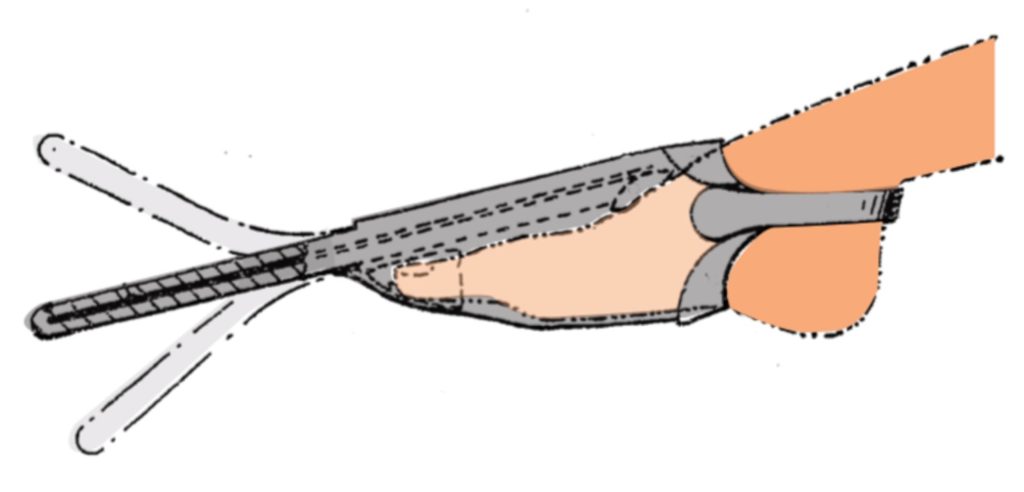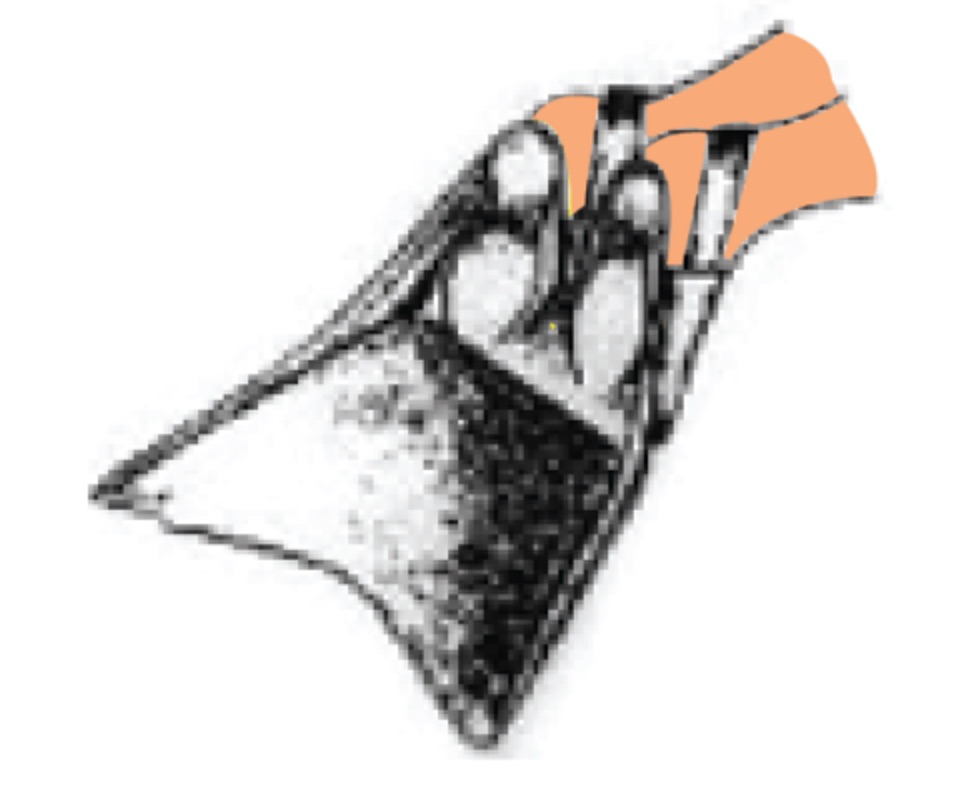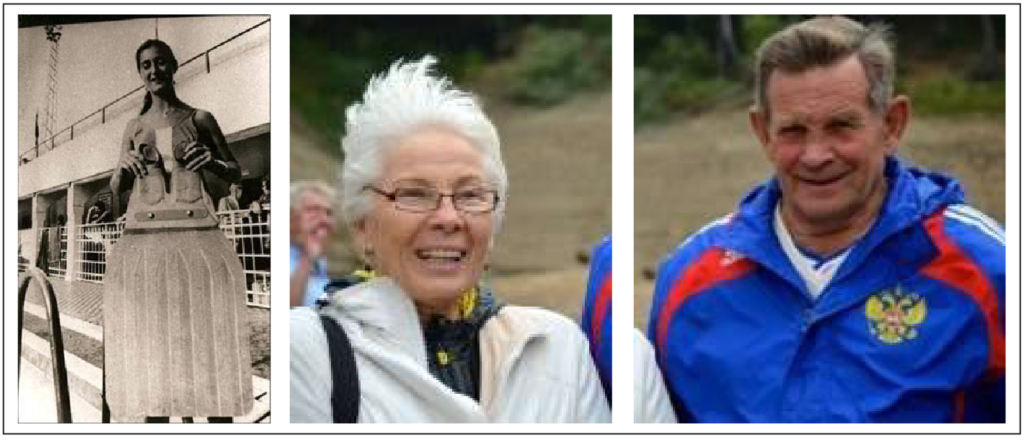The first fins were designed by a member of the french military, Louis de Corlieu, who registered the first patent in 1933. He understood that to have significant propulsion, we have to increase the surface of our natural driving forces.

In 1937 the same inventor designed the first monofin called “the Dolphin Model,” for the opening of a subaquatic school in France.

But the real history of the monofin started in the 60s with the bifin competitions in CMAS (Confédération Mondiale des Activités Subaquatiques). The athletes were able to swim with bifins: Freestyle, Immersion, and Apnea. The bifins, which were made of rubber, were very soft and very heavy. The propulsion from these kinds of bifins was not very efficient and athletes were losing a lot of energy.
In 1970, during the European Championship in Barcelona, a Russian athlete named Nadedja Turukalo used a monofin to perform 25m apnea for the first time in an international event. This monofin was composed of titanium and canvas.

(illustration from “La Monopalme
” Kervinio 1985)
In 1971, Nadedja Turukalo broke the 4-minute record in the 400m immersion (underwater race). At this time, the performance was absolutely fantastic. This performance was the real beginning of the monofin’s development. Competitors, trainers, national federations, all of them started taking a big interest in this incredible tool.

(thanks to Fabio Paon for the pictures)
Fiberglass instantly appeared and was the main point of development for the monofin. Fiberglass is light, flexible, resistant, and enhances speed. The use of fiberglass leads many new researches into new prototypes, with various designs depending on the dimensions of the blade (height and base), shape, softness, hardness, responsiveness, etc…
At this time, most of the Soviet team used monofins made of fiberglass. These monofins were mostly used underwater because it is inefficient to swim on the surface while synchronizing arms (freestyle) and also using dolphin kicks (remember: athletes competing in surface races that were using a monofin had to respect the same rules and have the same constraints as the athletes using bifins: they had to use their arms during the race).
In 1972, the finswimming sport changed a lot, and monofins took the place of bifins in the competitions. That year, at the European Championship in Moscow, a gap definitely appeared between the users of monofins and bifins. The difference in performances became very distinct, and bifins started to become useless.
Not all countries had the resource to produce monofins. Russians with advanced knowledge of building monofins started the business.
In 1977, CMAS changed rules for the surface races: the athletes were allowed to swim without using their arms (freestyle). Now, the full power of the monofin would also be expressed in surface races.
During the 80s, it seemed that nothing special occurred relative to the monofin’s evolution, but significant events happened:
– In 1981, the first representation of finswimming (with monofin) occurred in the USA at the World Games. Within that same year, the Chinese ordered 300 pairs of fins in fiberglass!
– In 1986, the Olympic Committee recognized finswimming as an Olympic discipline. That same year, the Chinese participated in the first World Championship in Germany.
– In 1990, 38 nations participated in the finswimming discipline at the World Championship in Rome, Italy.
– Guidone, a Frenchman, was the first to use a carbon patch in order to make the blade more responsive, and Breier, also a Frenchman, was the first to design a carbon monofin blade.

In the 90s, swimmers started to adopt a very elongated position with the head under the water, just under the surface (they used front snorkels during the surface races). The monofin started to be shorter, and it became all about training and speed.
In the 2000s, the monofin blade seemed to be at the top of its development. Some blades were handmade, but now some designers utilize specific industrial processes (pre-impregnated fiberglass, carbon, etc).
At the beginning of the 2000s, the evolution of the monofin began a revolution: new foot pockets and wings will that changed the story.
Theo-Patrick FOURCADE
Next post: Basic knowledge about the blade.
References:
– La Monopalme, 1985 J.L. Kervinio
– Nage avec Palmes, 2004 Jacques Macé
You are welcome to use information from the blog, but please specify the source with a link: Theo-Patrick FOURCADE – bewaterfreediving.com ©
All the illustrations are copyright ©, please ask me before use.


Good work Theo. Only an error. World Championship in Rome was in 1990. I was there. If you want I have a photo of Turukalo and Podorov in 2017…
Hello Fabio!! Thank you for your comments, i will modify the date : 1990 Rome and 38 nations! Yes, please send me picture. It will be great to add it! Thank you so much (you cans send the photo at : theo@ylon.com )
Dear Fabio and Theo!
I’m PhD Student from Hungary, and I’m writing an article the Hungarian finswimming history. Maybe, can you send me that picture from Turukalo and Podorov?
Thank you very much! (kovizsofi@freemail.hu)